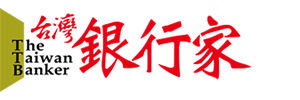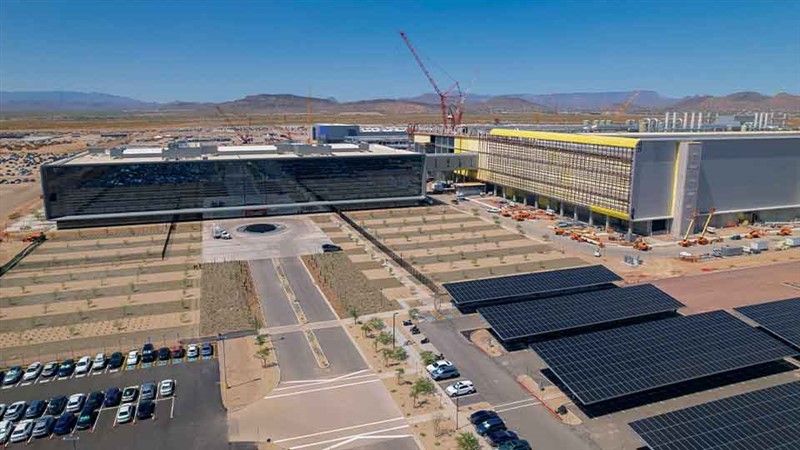2023.09 The Taiwan Banker NO.165 / By Liao He-ming
Taiwanese banks go “Eastbound,” following the tech sector to the USBanker's Digest
Following the temporary disruption from covid, the financial industry has moved steadily overseas, particularly targeting ASEAN and the US. Overseas profits in the New Southbound region grew from US$ 8.71 billion 1H 2022 to US$ 12.19 billion 1H 2023, an annualized growth rate of 40%. Banks also performed well in the US, growing their profits from US$ 4.75 billion in 1H 2022 to US$ 5.46 billion in 1H 2023, increasing by US$ 710 million, or 15%. US manufacturing has strengthened in recent years. In December 2022, US President Joe Biden attended the TSMC Arizona plant relocation ceremony and said, “American manufacturing is back.” Accompanying Taiwanese manufacturers moving into the US, finance plays an important role as a source of funding. Currently, there are 25 branches, 3 subsidiaries, and 3 representative offices of Taiwanese banks in the US, mostly of publicly-owned banks. Bank of Taiwan, Land Bank, Cooperative Bank, First Bank, Hwa Nan Bank, Chang Hwa Bank, Mega Bank, and Taiwan Businesses Bank have all set up branches in New York and Los Angeles. Bank of Taiwan has representative offices in Silicon Valley and Phoenix, Taiwan Cooperative Bank has branches in Houston and Seattle, First Bank has branches in Guam and Houston, as well as a subsidiary, First Commercial Bank (USA). Mega Bank has branches in Chicago and Silicon Valley. Among the privately-owned banks, Bank SinoPac and E.SUN have branches in Los Angeles, O-Bank has a subsidiary EverTrust Bank (USA), and Chinatrust Bank has a subsidiary, a New York branch, and a Los Angeles representative office. “Taiwan Can Help” Allen Cheng, Secretary General of Taiwan Eastbound Alliance – Landing America, said that the current global economy is highly volatile; Taiwan’s semiconductor and tech industries are attracting global attention, an unprecedented opportunity for development. TSMC’s planned advancement into Arizona, Kumamoto, Japan and Dresden, Germany represents not just an individual action by a single company, but a global expansion of Taiwan’s tech ecosystem into major economies around the world. Amid this rapid progress, however, abundant cash flow and financing support from the home country is still required. Cheng emphasized that the financial industry has always been the key force driving industrial development, and the internationalization of Taiwan’s financial services and digital innovation will support global deployment of Taiwanese business. A visionary, innovative, and efficient domestic financial ecosystem will help Taiwanese businesses manifest greater international influence and competitiveness. Under this New Eastbound trend, Taiwan’s semiconductor and tech industries will join hands with finance to march onto the world stage, providing strong impetus for Taiwan’s economic development and upgrade, from international financial flows and capital utilization to risk management. On August 7, Chang Hwa Bank Chairman Ling Chung-Yuan led her senior executives to officiate the move-in ceremony of the Los Angeles branch. Chang Hwa Bank has been in the US for more than 30 years and has branches in both New York and Los Angeles. California is a high-tech region in the US, and also a favorite destination for Taiwanese businesses and consumers. Chang Hwa Bank been in the western US for 33 years, accumulating a wealth of experience. In recent years, the US government has encouraged re-shoring of manufacturing, promoted establishment of local semiconductor industry chains, and provided incentives to attract Taiwanese business to move to the US. Ms. Ling also said that the relocation of the Los Angeles branch will ensure that “wherever Taiwanese businesses go, there is service for them.” Consumer finance FirstBank currently has four US branches (Guam, New York, Los Angeles, and Houston) and one subsidiary (with eight branches). The subsidiary sub-branches are three northern California branches in Silicon Valley, Fremont, and San Mateo, and five southern California branches in Alhambra, Industry City, Irvine, Arcadia, and Chino Heights. In order to fulfill its social responsibility to give back to the community and revitalize community development, expand the scope of its services, achieve economies of scale, deepen its local presence, and increase its overall mortgage lending, the subsidiary has evaluated the possibility of establishing an additional base in Ontario City, southern California. It forecasts that local demand for real estate rentals and corporate loans will grow, in line with the lending office’s business strategy, as well as the complementary customer bases of the parent and subsidiary banks. After having evaluated the application process and operating costs, it plans to set up a lending office. Most of First Bank’s US branches and subsidiaries have been growing steadily in terms of profitability. The Houston branch opened in February 2021, with and turned profitable in 4Q 2022. The bank expects it to be profitable for the whole year of 2023. Unlike the regional branches (New York, Los Angeles, and Houston), which focus on wholesale business, the US subsidiaries have the advantage of being localized, and provide consumer finance for local SMEs and individuals, complementing the branches. First Bank emphasized that recent economic indicators show a slowdown in the US economy, but the job market has been growing steadily, with unemployment remaining low. Inflation remains significantly above the target and is still the focus of the Fed, which it expects to continue hiking interest rates slightly in the second half of this year. While controlling liquidity risk in response to contraction of its balance sheet, the subsidiary will continue prioritizing product quality, selecting credit cases to steadily increase its client base. First Bank assesses that major countries will maintain supply chain shortening and friend-shoring policies in order to prevent supply chains from being controlled by any specific country; the number and size of Taiwan businesses setting up factories in Europe and the US will continue to increase. Its strategy is to continue intensively investing in in ASEAN, with stable expansion in Europe, the US, and Japan. In addition to expanding its lending in the US, in order to enhance its operational efficiency, expand its business base, and create new overseas profit sources, it is also considering extending the service offerings of its existing locations. Opportunities in the semiconductor industry supply chain Mega Bank said that the trade war, technology war, pandemic, and Ukraine war have accelerated the transition from global to regional divisions of labor, and Taiwanese businesses have correspondingly shifted their sights to North America and ASEAN. Mega Bank has four branches: New York, Chicago, Los Angeles, and Silicon Valley. Due to regulatory concerns, it focuses on international syndicated loans. Although its income from Taiwanese clients is lower than from international syndicated loans, in response to development of the technology cluster in the southwestern US and growth in Taiwanese investment into the US, and in order to enhance services in response to government policy, the marketing team of the head office’s International Business Group integrated the resources of the US branches with those of domestic branches to serve large corporate customers in the US. The four US branches will continue paying close attention to business dynamics and collect information in order to eventually decide whether to open additional branches. In 2022, Mega Bank’s US branches will account for about 23% of the profits of its overseas branches, up from 12% in 2021. Its development priorities and goals for the year include optimizing and expanding its participation in international syndicated loans (such as for green supply chains), providing financing and capital flow integration solutions for Taiwanese companies in the US (such as semiconductor and EV supply chains), and flexibly utilizing its own capital. In addition, the US branches have established comprehensive compliance policies based on operational processes, internal controls and audit and AML systems, employing local compliance officers with professional competence and experience. The branches also formulate annual operation strategies and business development plans, considering the cost of compliance for each business line, and dynamically adjust their business based on local regulatory trends. US compliance requirements to prevent fraud and embezzlement and track the use of customer funds are more stringent than elsewhere, but it is still useful for the bank to get used to these standards. The bank said that the US fintech sector is vigorously developing digital currencies, smart investment, blockchain applications, and AI. The US is getting stricter on BSA/AML and IT/IS compliance, mandating professional AML and compliance supervisors. Banks must effectively and automatically monitor suspicious transactions and the OFAC sanction list, and ensure Fedline system and customer information network security. The branches now have solid local experience in corporate finance, rich connections and resources, familiarity with local financial regulations and practices, and ability to assist market entrants with company setup, operations, and finance, as well as customized financing structures, providing integrated financing and cash flow services for factory, infrastructure, raw materials, and other suppliers. The bank continues to pay attention to the opportunities arising from the Made in the USA re-shoring policy, such as semiconductor, advanced EV battery, pharmaceutical, and rare earths supply chains. It is also paying attention to progress on laws related to ESG in order to grasp opportunities arising from related incentives by the US government.


